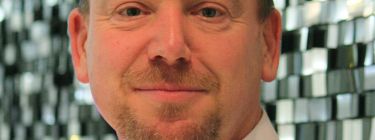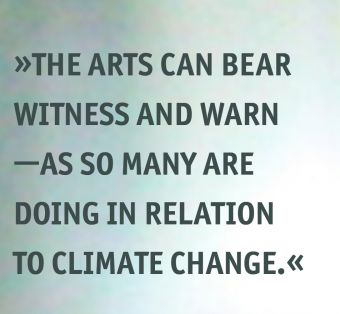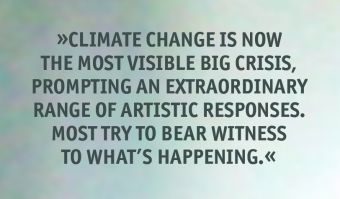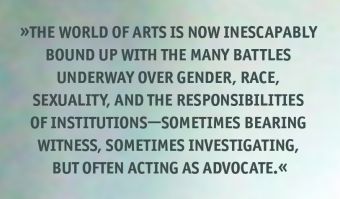
Renaissance, the world and Europe
Sir Geoff Mulgan, Professor of Collective Intelligence, Public Policy & Social Innovation at University College London and Fellow at The New Institute, Hamburg, and Demos Helsinki

Renaissance, the world and Europe
Beyond the obvious
In the middle of the 20th century Europe was ravaged by world war. But it continued to dominate the world. The empires of Britain and France remained vast. Europe accounted for over a fifth of the world’s population and most of its largest economies.By the middle of the 21st century that will all have changed dramatically. Europe’s share of world population will be closer to a twelfth; its economies will have been overtaken not just by China and India but possibly by others such as Brazil and Nigeria. Its military might will be modest compared to the superpowers.
Moreover, many of the things that might have once seemed uniquely European no longer do. There are many examples of healthy democracies and many examples of the rule of law. Science is more generously funded in countries like South Korea or Israel than most of the EU.
To the extent that people across the world talk about European values, they talk as much about slavery, exploitation and genocide as they do about human rights.
So, any discussion of renaissance has to be tempered by humility. Too much European self-love feels ever less appropriate to the times.
Picture above: Geoff Mulgan, Copyright: NESTA
What Europe has however sustained is a unique mix of features that remain attractive to the rest of the world. We remain good at combining security, prosperity, democracy and ecology. In the developing world people speak of “getting to Denmark” as the typical objective for most of the world’s poorer countries.
And part of that mix is being at ease with creativity, exploration and discovery. That hunger for challenge is not only still missing in many places but is also in retreat—squeezed in Xi’s China, blunted in Erdogan’s Turkey, frozen out in Putin’s Russia, ideologically constrained in Modi’s India.
This makes it all the more important that Europe continues to try to imagine, to fuel creative imagination. To me the heart of this is to imagine not just how the world could get to Denmark, or how to assert our values, but rather to think forward to a plausible and desirable picture of what societies could be like a generation or more from now.
What might a truly zero-waste and zero-carbon society look like? How could democracy evolve to make the most of collective intelligence? How can we live with hugely powerful artificial intelligence in ways that help us thrive? How will we live with far more free time, the result of shrinking working hours and rising life expectancy?
This is the imaginative space that is so badly needed now and at the heart of any plausible renaissance. But at the moment, in Europe as elsewhere, the thinking is weak and constrained.
The universities have largely given up on their role in exploration of the future (something I have written about, with suggested remedies, for the New Institute in Hamburg). Political parties and think tanks
are much more trapped in the present. A few governments have small teams looking into the distant future—for example in Singapore and Finland. But in general, although there is heavy investment in technological imagination and futures—much of it in Silicon Valley—there is far less on social possibilities. This is one reason why so much of Europe’s public now fear the future and expect their children to be worse off than them.
I’m interested in the role the arts can play. Claims that the arts can be prophets of the future, trailblazers of a future society, are quite wrong, and based on misunderstanding—though commonly articulated over the last two centuries by everyone from Percy Bysshe Shelley (who called poets the “unacknowledged legislators of the world”) to Joseph Beuys (who claimed that “only art is capable of dismantling the repressive effects of a senile social system that continues to totter along the death-line”). I can think of no work of art of the last 50 years that described or defined a better future for our society.
But what the arts are uniquely well placed to do is other essential work. I believe that some of the methods of creativity and design need to be integrated with the social sciences and the work of policy design. Remarkably little of this happens now—yet that cross-pollination was precisely what fuelled previous renaissances.
The arts can bear witness and warn—as so many are doing in relation to climate change. They can transform our perceptions. They can explore possibilities, both good and bad, as so many are doing with AI and data. And they can help large numbers to take part in the work of social exploration. Here are three examples.

Bearing witness: climate change
Climate change is now the most visible big crisis, prompting an extraordinary range of artistic responses. Most try to bear witness to what’s happening. Olafur Eliasson’s blocks of ice melting in city squares vividly make people think about climate change as a reality, not an abstraction. A similar effect is achieved by Andri Snær Magnason’s plaque to commemorate a lost glacier in Iceland or the World Meteorological Organization’s short videos presenting fictional weather reports from different countries in the year 2050: “WMO Weather Reports 2050.” Others turn the medium into the message, re-using waste materials to signal the emergence of a more circular economy.Literature is also grappling with climate change. What one author called ‘socio-climatic imaginaries’ can be found in novels such as Paolo Bacigalupi’s The Water Knife and Kim Stanley Robinson’s Green Earth (both from 2015) which go beyond the eco-apocalypse to examine the multiple interactions between nature and social organisation. Kim Stanley Robinson has spoken of science fiction as “a kind of future-scenarios modelling, in which some course of history is pursued as a thought experiment, starting from now and moving some distance off into the future” and makes a good case that literature is better placed to do this than anything else. As the warning signs of crisis intensify we should expect all the arts to respond in creative ways, both warning and bearing witness but also pointing to how we might collectively solve our shared problems.
Investigating complex challenges
The second big crisis—in the sense of being both a threat and opportunity—comes from algorithms and a connected world. Here the role of the arts seems to be more about investigating complex challenges and dilemmas. Many fear that technology will destroy jobs, corrode our humanity and our ethics. So it’s not surprising that we’re seeing an extraordinary upsurge of art works both using and playing with the potential of artificial intelligence. For some artists AI is primarily interesting as a tool—with GPT3 writing fiction; Google Tiltbrush and Daydream in VR; or the growing use of AI by musicians and composers. There are many wonderful examples of emerging art forms (like Quantum Memories at the National Gallery of Victoria in Melbourne). But others are trying to dig deeper to help us make sense of the good and the bad of what lies ahead. Look, for example, at the work of Soh Yeong Roh and the Nabi Center in South Korea exploring ‘Neotopias’ of all kinds and how data may reinvent or dismantle our humanity. LuYang’s brilliant ‘Delusional Mandala’ investigates the brain, imagination and AI, connecting neuroscience and religious experience to our new-found powers to generate strange avatars.
AI’s capacity to generate increasingly plausible works of visual art and music is of course a direct threat to artists, and perhaps encourages a
hostile or at least sceptical response in works like Hito Steyerl’s projects exploring surveillance and robotics (like HellYeahWeFuckDie); Trevor Paglen playing with mass surveillance and AI; or Sun Yuan and Peng Yu’s ‘Can’t Help Myself’, on out of control robots. Others are more ambiguous. Ian Cheng’s Emissaries series imagined a post-apocalyptic world of AI fauna, while Sarah Newman’s work, such as the Moral Labyrinth, explores in a physical space how robots might mirror our moral choices, giving a flavour of a future where algorithms guide our behaviours.
Andreas Refsgaard’s work is playful in a similar vein, like the algorithm assessing whether people are trustworthy enough to be allowed to ask questions. Shu Lea Cheang’s work 3x3x6 references the standards for modern prisons with 3×3 square meter cells monitored continuously by six cameras, using this to open up questions about surveillance and sousveillance, and the use of facial recognition technologies to judge sexuality (including in parts of the world where it’s illegal to be gay). Kate Crawford’s fascinating project on the Amazon Echo (now at MOMA) is another good, didactic example, revealing the material and data flows that lie behind AI.
Each of these brings to the surface the opaque new systems of power and decision that surround us and the hugely complex problems of ethical judgement that come with powerful artificial intelligence.
Advocating for change
The third, slow-burning crisis concerns inequality in all its forms, at a time when power and wealth have been even more concentrated than ever in the hands of a tiny minority. The arts have always played a central role in advocating for greater equality, from the feminist utopias of the 18th century to the revolutionary films and murals of the 20th. They have also, of course, been bound up with wealth and power, dependent on kings and patrons, and today on the super-rich. The world of arts is now inescapably bound up with the many battles underway over gender, race, sexuality, and the responsibilities of institutions—sometimes bearing witness, sometimes investigating, but often acting as advocate. A striking example is the way around the world the Black Lives Matter movement sparked an extraordinary rethink. An interesting recent example is the transformation of the public statue of Robert E Lee in Richmond, Virginia, now covered with a growing forest of slogans and the names of victims of police violence. Many arts institutions are now being held to account for their treatment of historical memory, their links to slavery (like the Tate Gallery in the UK), and the connections of the arts establishment to the more malign features of contemporary capitalism. A good example is the work of Forensic Architecture challenging the role of the then vice-chair of the Witney Museum over his company’s role in making tear gas, a rare example of challenging elite power in the art market.

The top end of the arts market is now entwined with the world of fashion and the lives of the ultra-rich—a symptom more than a solution of what’s gone wrong with the world. High-end art generally favours forms of art that are abstract or ambiguous, paying lip service to equality but avoiding anything too specific, and now plays with new financial devices like NFT to commoditise art as a luxury good.
But a radically different energy is now coming from the bottom up, with a demand for the arts to be more engaged and more accountable. My sense is that this is fast becoming a generational divide, with an older generation reasserting the artist’s autonomy and freedom from accountability, and taking for granted a world of patrons and galleries not so different from a few centuries ago, and a younger generation no longer convinced that this is right for our era.
So art can thrive on crisis and can help foster a much needed renaissance. It can bear witness, explain and provoke. Many sense that a period of relative stability may be coming to an end. The first half of the 20th century brought world wars, and revolutions from Russia to China. Europe had far too much history! But history then slowed down—in good ways for much of the world. The Cold War froze
international affairs, and the period after its end brought far fewer big wars and fewer revolutions, even as parts of the world descended into civil war.
The 21st century by contrast appears set to see history accelerate again, with a looming confrontation between the US and China, the rising pressures of climate instability and the fragility of a world more dependent on networks and machine intelligence.
That may or may not be good for the arts. Harry Lime’s comment on Switzerland doesn’t quite fit today’s world, where the countries producing the most successful artists are generally stable and prosperous (Germany, the US…) rather than steeped in crisis and civil war (Congo, Afghanistan…).
But perhaps a little discomfort is good for the arts, and may better help them to help us make sense of the crises around us and to sensitise us to what’s not obvious. That may also prompt them to work harder to be part of the solutions rather than part of the problem and to help us to be actors not just observers.
Geoff Mulgan
Sir Geoff Mulgan is Professor of Collective Intelligence, Public Policy & Social Innovation at University College London (UCL). He was CEO of Nesta, the UK’s innovation foundation from 2011-2019. From 1997-2004 Geoff had roles in UK government including director of the Government’s Strategy Unit and head of policy in the Prime Minister’s office. Geoff advises many governments, foundations and businesses around the world. He has been a reporter on BBC TV and radio and was the founder/cofounder of many organisations, including Demos, Uprising, the Social Innovation Exchange and Action for Happiness. He has a PhD in telecommunications and has been visiting professor at LSE and Melbourne University, and senior visiting scholar at Harvard University. Past books include ‘The Art of Public Strategy’ (OUP), ‘Good and Bad Power’ (Penguin), ‘Big Mind: how collective intelligence can change our world’ (Princeton UP) and ‘Social innovation’ (Policy Press).
Picture © NESTA

